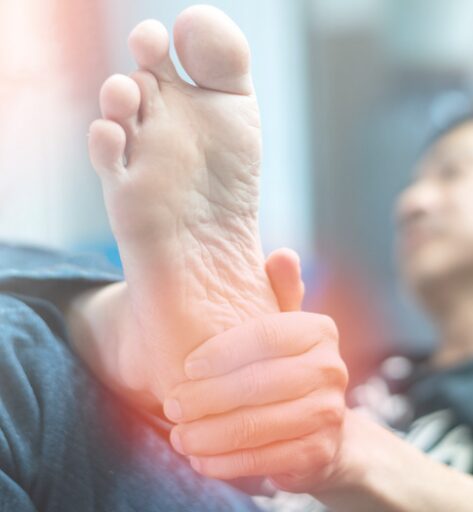Bone Spurs
Bone spurs, also known as osteophytes, are bony projections that develop along the edges of bones. In the foot, bone spurs commonly occur in areas where bones meet or where ligaments and tendons attach to bones. They can develop as a result of prolonged stress, pressure, or repetitive motion on the foot, often due to factors such as arthritis, injury, or biomechanical issues.
Bone spurs are most common in people 60 years or older, but younger people can get them, too. People with osteoarthritis (OA) are much more likely to get bone spurs. OA is a common form of “wear and tear” arthritis that happens when cartilage, which cushions your bones, wears down.
What Are the Symptoms of Bone Spurs?
The bone spur itself is painless, which is why people often don’t realize they have one. When the patient does experience pain, it is because the spur touches other tissue, particularly nerves.
In addition to pain, patients who have a foot or heel spur may experience:
- Redness, swelling, and/or warmth at the affected area
- Stiffness or other limitations that affect joint mobility
- Difficulty standing or performing weight-bearing activities
How can I reduce my risk of bone spurs?
There is no certain way to prevent this condition. But you can reduce your chance of developing them by following a healthy lifestyle:
- Be physically fit.
- Eat a balanced, nutritious diet.
- Maintain a healthy weight to reduce extra stress on bones and joints.
- Maintain good posture and ergonomics (proper positioning at your desk).
- Prevent joint injuries by stretching and using safe exercise techniques. Don’t overdo it.
- Wear well-fitting, supportive shoes.
Are you suffering from any foot condition? At The Chelsea Clinic, we can help. One of our podiatrist can assist and then recommend what treatments are best to get you back on track. Podiatrist South Kensington
Schedule an appointment here or you may call us at +44 (0) 207 101 4000.
We hope you have a feetastic day!
-The Chelsea Clinic and Team
Learn more about Fungal Nails




